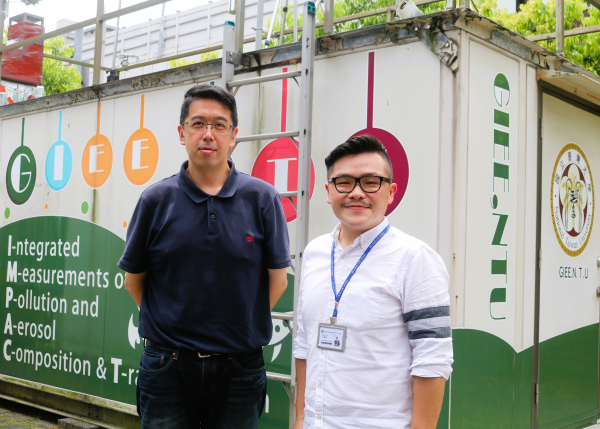Different Emission Sources of PM2.5 Have Particular Health Hazard Implications, Oxidation Capacity Is a Better Index for Air Quality
In addition to the mass concentration of particulate matters, scientists have found that PM2.5 composition is also a deciding factor which influences human health. It is thus recommended that cellular oxidative stress of different PM2.5 be further explored to reflect their levels of toxicity and pinpoint their impacts on air quality and human health.
A collaborated research team with scholars from National Taiwan University (NTU) and National Yang Ming Chiao Tung University (NYCU) analyzed the particulate matters in the metropolitan area and found that the PM2.5 composition includes substances such as organic aerosols, iron, manganese, and copper, which can all lead to oxidative stress in cells. However, it is worth noting that not all of these airborne metals come from the exhaust emissions of vehicles; instead, they are more likely the result from the wear of brake discs produced in stop-and-go traffic jams.
The research team placed an aerosol sampler at a survey station of NTU near the busy Keelung Road to collect air samples for nearly a month, and found that the PM2.5 components were mostly particles emitted by automobiles and motorcycles into the air which then chemically reacted with sunlight, commonly known as secondary inorganic aerosol (SIA). Furthermore, there was a small amount of black carbon and metal particles, proving that the congested traffic in the metropolitan area is one of the reasons deteriorating air quality. Secondary inorganic aerosols and black carbon are considered traditional traffic pollutants. However, studies have found that the metal particles released by frequent braking of vehicles (referred to as “non-exhaust emissions”) also have a considerable impact on human health.
Foreign studies have long found that the metal particles produced by brake disc wear can cause cell inflammation and increase the risk of respiratory complications just as the exhaust gas released by engine combustion.
Research PI, Prof. Ta-Chih Hsiao from NTU GIEE, said that the harm of particulate matters to the human body mainly arises from the excessive accumulation of active oxides in our cells, more commonly known as the free radicals, which in turn lead to cell damage. The research shows that different composition of particulate matters can all become a source of cellular oxidative stress, including secondary inorganic aerosol, black carbon, and airborne metal.
Prof. Kai-Hsien Chi from the Institute of Environmental and Occupational Health Sciences of NYCU is responsible for analyzing the composition and toxicity of particulate matters in the air. Prof. Chi pointed out that the mass concentration system currently adopted to monitor particulate matters cannot fully reflect the various impacts of particulate matters on health, and that the system does not illustrate accurate correlation with cellular oxidative stress. While the PM2.5 mass concentration in two areas may be the same, different PM components can actually make a huge difference in terms of impact. If the cellular oxidation capacity of particulate matters in the air can be further analyzed, the findings will be more meaningful and instrumental to public health.
In the future, the NTU-NYCU team seeks to incorporate the concept of cellular oxidative stress and establish a new hazard evaluation system for particulate matters so as to let the public understand the impact of air quality on health. Additionally, the new evaluation system can serve as a solid, effective foundation on which the government may formulate policies for pollution improvement and health protection. In this way, air quality monitoring in the future will also enjoy higher accuracy.
The research results above have been published in the international journal Environmental Pollution:
https://www.sciencedirect.com/science/article/pii/S0269749121017887?via%3Dihub
Additional reference: https://www.kcl.ac.uk/news/air-pollution-from-brake-dust-may-have-same-harmful-effects-on-immune-cells-as-diesel-exhaust

Photo of Prof. Ta-Chih Hsiao (left) from NTU GIEE and Prof. Kai-Hsien Chi from the Institute of Environmental and Occupational Health Sciences of National Yang Ming Chiao Tung University